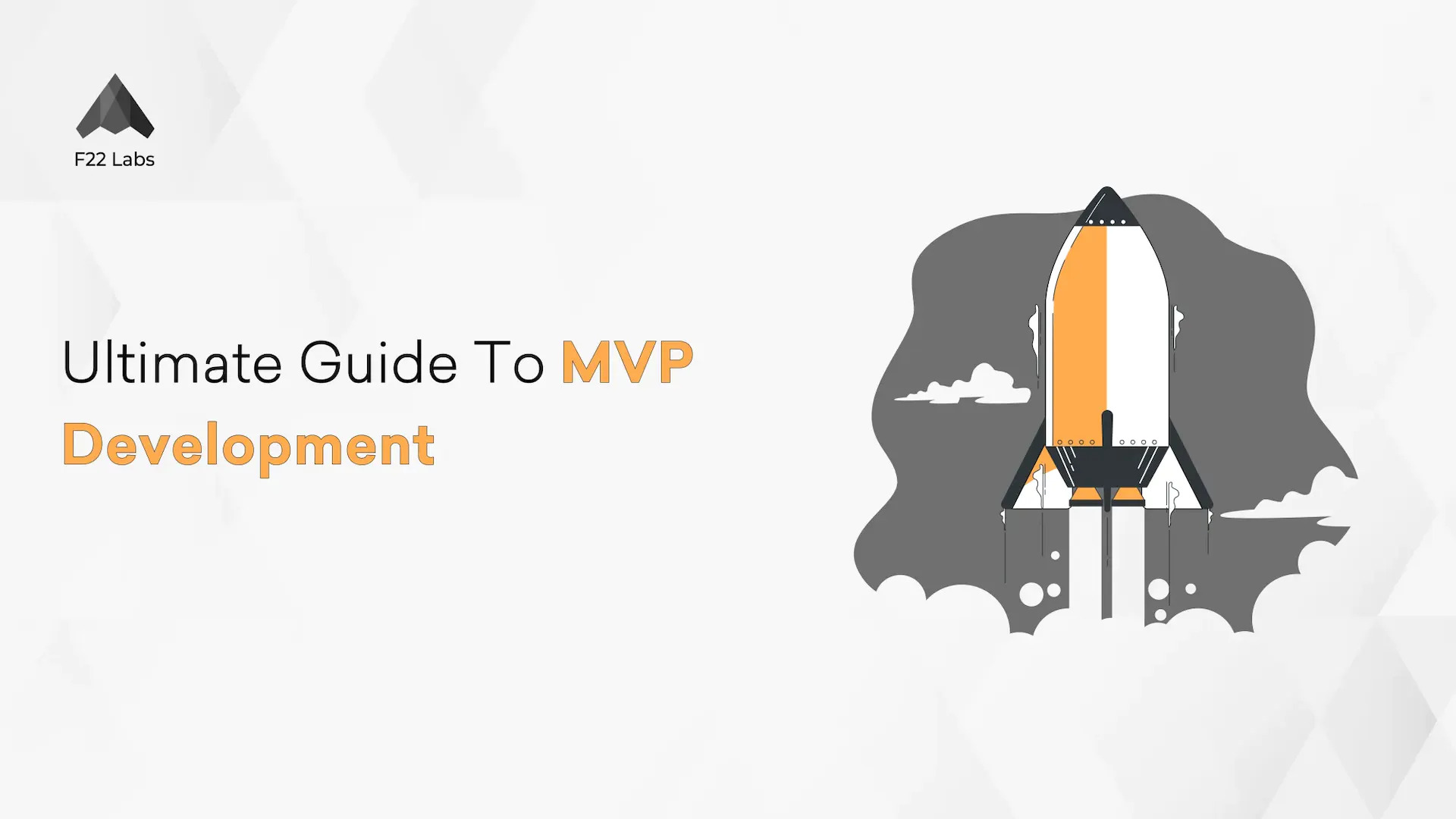Ultimate Guide to MVP Development
 F22 Labs
F22 Labs
Have you ever experienced a moment when a new idea pops into your head and your first thought is, “Wow! That’s a Million Dollar Idea”. You begin to imagine yourself as the next Bill Gates or Elon Musk. & after conducting some research, the idea gradually fades away. You start to question whether your idea is worthwhile — “Ah! Such a lame idea!”. Similarly, everyone has several ideas, but only a few explore them to determine if it’s worth their time and money.
Many entrepreneurs have desired and realized their aspirations. Some are rich, while others have vanished. The difference between the two is turning an idea into a reality. The most significant aspect of this process is MVP development.
But what is an MVP? From a technology standpoint, MVP is an abbreviation for Minimum Viable Product. It is building a limited core feature of your idea and giving it to early users for their feedback, through which you iterate and build further to match the problem with a solution. MVP eliminates the early risk of making an unknown product without user satisfaction. MVP is now a key aspect in bringing an idea to market.
Our experience in developing MVP products for startups & some of the fortune 500 companies have enabled us to create this ultimate guide for MVP development services, which will be extremely useful in building unique products & the business journey.
Importance of Building a Startup MVP
Test Product market fit
Attract Investors
Saving time & resources
Figure out critical features to build out**.**
Startup MVP Development Process
Step 1: Market Research
Step 2: Figure out the USP of the Product
Step 3: Map the User Journey of the MVP
Step 4: Finalize the MVP development method
Step 5: Launch an MVP
Step 6: Analyze alpha users to evolve the MVP into a product
Popular Startup MVP Examples
Amazon
Amazon’s journey from a simple idea of selling books online to now building Rockets, all while becoming a trillion-dollar company, is the classic example of how MVP development can help you pivot to a whole new business.
Airbnb
Chesky and Gebbia had moved recently to San Francisco; they had an extra space in their home, finding difficulties paying their rent and realizing multiple conferences were taking place in their locality. All the hotels were completely booked. They had a hypothesis — that customers would like to stay at home if available to book online. So they put up their extra space on sale and got three guest bookings. This validated people looking to stay at home away from home.
Dropbox
They had a different idea of saving and sharing files, though building a prototype requires a lot of development. Instead, they released a video on Youtube to showcase what Dropbox is all about, and instantly it became a hit. Here’s the video link. The signup increased from 5000 to 75K in a day. This shows that the communication and messaging showcased how Dropbox can solve its problem. This is a classic example of video MVP.
How much time is required to develop an MVP?
Now you wonder if MVP saves time, how fast can it be completed to go to the market soon? Yes, MVP saves time from overall product development, which might take six months to 2 years, depending on the project scope and requirements. MVP can be done anywhere between 12 weeks to 16 weeks; it is crucial to understand the idea, project scope, feature set needed, and complexity related to building the technology.
Some common mistakes to avoid while building an MVP
Though we have given multiple factors of building an MVP & how important it is, some elements need to be kept in mind in MVP that can make or break a project.
Building too many features / Feature Creep
Solving a Non-Problem
Being rigid with initial vision & Inability to pivot
Hiring full-time resources to build MVP
Tips for Pitching an MVP to Investors
Create an incredible User story around your product. They should realize how your product/idea can help your customers. Please give them a hands-on demo of how to product looks and functions.
The MVP process has helped you do the research. So it is essential to put that data across to your investors. Please give them the efforts you took in gathering the vast data, how you analyzed it, and came up with meaningful insights and real problems faced by the user. It will help investors understand that a problem exists and your product is the solution.
Show the performance of your product. Your MVP is out in the market. You can share these essential metrics with them -
Registered users
Initially paid users
Retention rate
Churn rate
Daily signups
Lead funnel
Impressions of your platform
Gross margins
ROI
Profit/Loss
It can give you an upper hand in negotiation. This gives them the confidence that the solution is a natural problem-solver and that people respond well to it.
Provide the trajectory to them. It is essential to what are your goals and vision for the next year, two years, five years & 10 years. How many users are you targeting, what will be the growth percentage, and also about the expansion plans?
Showcase what you would do with the funding. Give them clear information on how the money will be used, for example:
Hiring employees
Getting an office
Campaigns activities
Shows, exhibitions & Partnerships
Timelines of usage
Give a clear breakdown of how the money will be used. This gives an impression of a well-planned roadmap.
Subscribe to my newsletter
Read articles from F22 Labs directly inside your inbox. Subscribe to the newsletter, and don't miss out.
Written by

F22 Labs
F22 Labs
A Software studio based out of Chennai. We are the rocket fuel for other startups across the world, powering them with extremely high quality software. We help entrepreneurs build their vision into beautiful software products (web/mobile).